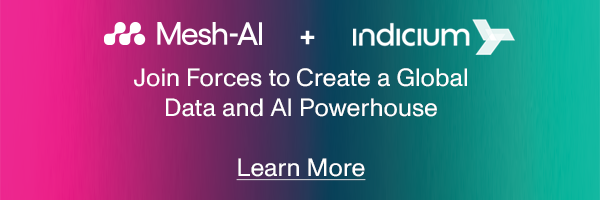


The insurance industry is reaching an inflection point, with incumbents struggling in the face of growing competition from new, cloud-native insurance firms. The challengers are able to rapidly adopt artificial intelligence (AI) and start reaping the benefits.
At Mesh-AI, we’ve helped insurers accelerate their data science programs and implement AI to solve their biggest challenges. And I’m seeing how these organisations are adopting new technologies to simplify business operations and make their workers’ lives more simple.
In this blog, I would like to share with you three innovative use cases for AI that I’ve seen in the insurance industry around near-instant document processing, enhanced risk assessments and solving data quality issues. Let’s jump in.
The insurance industry is very document-heavy, many of which are still handwritten or scanned pdfs of handwritten documents, including lengthy policy documents and client claim notes.
Parsing these documents manually for the key information is an incredibly time-consuming manual task. As a result, it is often outsourced to third parties, which carries a high cost, potential security risks and the output can be inaccurate.
By using a combination of traditional ML and generative AI, insurance organisations can process their documents in a fraction of the time and reduce their reliance on third parties in the following ways:
Underwriters and claims handlers will have their work lives turned upside down by this approach. Rather than trawling through pages of handwritten notes, they can use traditional ML models to scan documents, deploy generative AI to summarise them and then simply query them to instantly get the information they need.
Insurance companies use simple models to determine the lifetime value and risk exposure of any prospective client and price their policies more accurately. Demographic data such as gender, ethnicity, age, historical claims, credit score and more are combined with scientific data to assess the risks for each of these profiles.
For example, how might new scientific data on the risks of long Covid influence insurance premiums? Or if a client moves to a more polluted city or a country with worse healthcare?
Keeping on top of all the ever-changing demographic and scientific data is a huge manual task, which is often outsourced to third parties. However, AI can carry out this task almost instantly. AI modelled on existing pricing can then ingest new data and studies, extract the key information and suggest how this might impact policy and pricing moving forward.
Actuaries suffer most from the substantial manual work involved in understanding their customer and pricing models. And the more out-of-date their models are, the greater the risk exposure.
Data quality is foundational for modern business success. Yet, many insurance companies lack truly solid foundations for their data governance.
Large Language Models (LLMs) and AI can be used to support data acquisition and integrity checks, as well as to infer data quality standards from data sets. Although this is still an evolving area for AI, it has the potential to be an incredible source of business value.
Firstly, AI can be used to spot data quality errors, make suggestions for how to improve or even just fix them on the spot. Models can ingest a data set and pick out missing values and other inconsistencies that humans might miss or take hours to spot. It can then make suggestions on how to fix these.
Secondly, it can infer missing data to fill the gaps. AI models can use freely available public data, third party sources or historical claims data from the relevant client or similar client profiles to create fresh data points to complete datasets. (These would then need to be validated manually).
Thirdly, you can use AI to generate data quality rules from an existing dataset to improve data standards. If you have a dataset that you know is high-quality, you can use AI to extract the rules that set is based on and overlay them onto other sets in order to bring them up to that same standard.
These might not be 100% accurate right out-of-the-box, but they can make an excellent starting point and develop further to put insurers ahead of their competitors.
These use cases are helpful for actuaries and underwriters as well as the data teams that supply those roles with data. These roles stand to have much of their tedious, manual work eliminated so they can focus on their core competencies.
AI is going to completely change the landscape of the insurance industry and its impact is already permeating every corner of the sector. So how can you get started?
Firstly, you need to get your data foundations in place. Your AI/ML models will only be as good as the data you feed them. If you want to know where you’re at in terms of data foundations, check out our free-to-use Data & AI Readiness Application.
Secondly, you need an AI-ready data platform with the appropriate governance, standards and ethics frameworks in place.
Thirdly, start by testing your generative AI models out on small use cases to learn and get some quick wins before you scale. This is where our Generative AI Accelerator can help.
If you’re interested in hearing more, please reach out.
